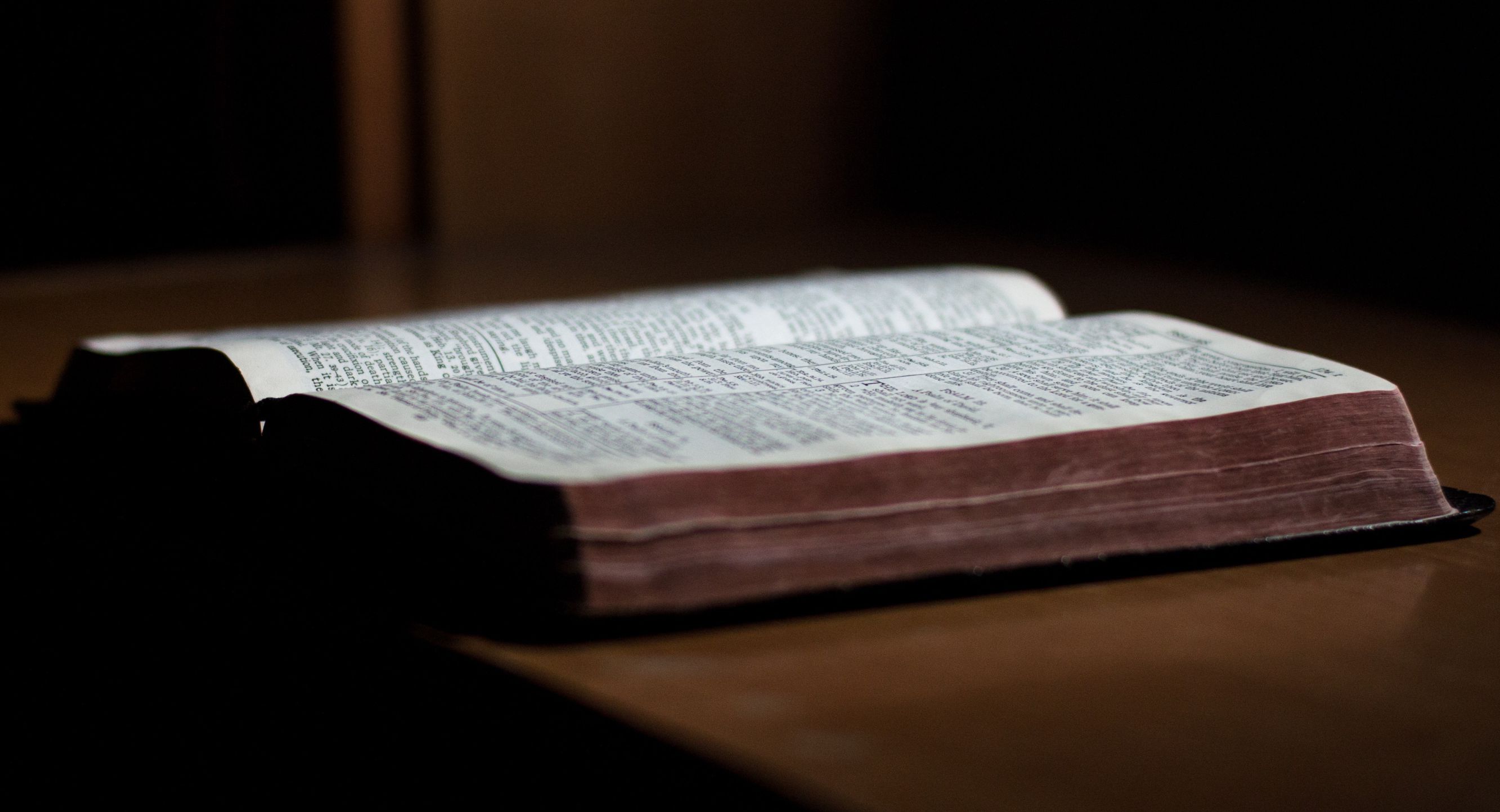In Search of the Oldest Literary Version of the ‘Miracle By the Sea’ (Exod 13:17-15:21
Janusz Lemański
University of Szczecin , PolandAbstract
The article is dedicated to an analysis and assessment of the newest critical literary research works on Ex 13,17-15,21. The aim is to find the oldest literary version of the event. In the author’s opinion, it is to be searched in Ex 13,20-22; 14,5-7.10bA.11-14,19-20.21aA.24-25.27*.30-31* and attributed to the non-P authors, who place the entire event ‘by the sea’. In this version of events the Israeli people, after crossing the Egyptian border, found themselves in a desert. For the first time they have expressed some fears of their lives, which is known as ‘the motive of complaining’. They show fear of the pharaoh’s army, so Moses urges them not to fear because they would not see the Egyptians more and YHWH would fight for them. The description has a characteristic of a military battle, although the only acting against the Egyptian military power is the God of Israel. Thanks to a strong wind, which blew for the whole night, he dried the sea and the Israelites reached the other bank walking on dry land, when the Egyptians die when trying to escape pointing to the returning sea waters. The events have their own time scheme: night and danger, dawn and salvation. A final effect is showing by the Israelites a fear of YHWH and his servant Moses. In the author’s opinion this version has originated short time before the fall of Babylon and was written according to a motive of ‘the Day of YHWH’ in its version, which was in force in the utterances of prophets of the period of exile and later (the day of judgment of nations, as a beginning of the salvation of Israel).Keywords:
exodus, miracle, sea, day of YHWH, MosesReferences
Albertz R., Exodus 1–18 (ZBK.AT 2.1; Zürich: Theologischer Verlag 2012).
Alster B., „Tiamat”, DDD (Leiden – Boston – Köln: Brill 1999) 867-869.
Batto B.F., „The Reed Sea: Requiescat in Pace”, JBL 102 (1983) 27-35. (Crossref)
——, Slaying the Dragon (Louisville: Westminster/John Knox 1992).
Berner Ch., Die Exoduserzählung (FAT 73; Tübingen: Mohr Siebeck 2010). (Crossref)
——, „Gab es einem vorprieterlichen Meerwunderbericht?”, Bib 85 (2014) 1-25.
Blum E., Die Komposition der Vätergeschichte (WMANT 57; Neukirchen-Vluyn: Neukirchener Verlag 1984).
——, Studien zur Komposition des Pentateuch (BZAW 189; Berlin – New York: De Gruyter 1990).
——, „Die Feuersäule in Ex 13–14 – eine Spur der Endredaktion?”, Textgestalt und Komposition (red. W. Oswald) (FAT 69; Tübingen: Mohr Siebeck 2010) 137-156.
Brenner M., The Song of the Sea, Ex 15,1-21 (BZAW 195; Berlin – New York: De Gruyter 1991).
Bromski J., Enuma eliš, czyli opowieść babilońska o powstaniu świata (Wrocław: Wydawnictwo Wacław Bagiński 1998).
Campbell A.F. – O’Brien M.A., Sources of the Pentateuch. Text. Introductions. Annotations (Minneapolis: Fortress Press 1993).
Childs B.S., „Deuteronomic Formulae of the Exodus Traditions”, Hebräische Wortforschung. Fs. W. Baumgartner (red. G.W. Anderson et al.) (VT.S 16; Leiden: Brill 1967) 30-39. (Crossref)
——, „A Traditio-Historical Study of the Reed Sea Tradition”, VT 20 (1970) 406-418. (Crossref)
Childs B.S., Exodus. A Commentary (OTL; London – Philadelphia: The Westminster Press 1974).
Coats G.W., „The Traditio-Historical Character of the Reed Sea Motif”, VT 17 (1967) 253-265. (Crossref)
——, „The Song of Sea”, CBQ 31 (1969) 1-17. (Crossref)
——, „The Exposition for the Wilderness Tradition”, VT 22 (1972) 289-295. (Crossref)
——, „A Structural Transition in Exodus”, VT 22 (1972) 129-142. (Crossref)
Cross F.M., Canaanite Myth and Hebrew Epic (Cambridge – London: Harvard University Press [1971] 91997).
Day J., God’s Conflict with the Dragon and the Sea (Cambridge: Cambridge University Press 1985).
Dohmen C., Exodus 1–18 (HThKAT; Hereder: Freiburg – Basel – Wien: Hereder 2015).
Donner H., Geschichte des Volkes Israel und seiner Nachbarn in Grundzüge (ATD Ergänzungsreihe 4/1; Göttingen: Vandenhoeck & Ruprecht 1984).
Dozeman Th.B., God at War. Power in Exodus Tradition (New York – Oxford: Oxford University Press 1996). (Crossref)
——, „The yam-sûp in the Exodus Tradition and in the Crossing of the Jordan River”, CBQ 58 (1996) 407-416.
——, Exodus (ECC; Grand Rapids: Eerdmans Publishing Company 2009).
——, „The Priestly Wilderness Itineraries and the Composition of the Pentateuch”, The Pentateuch (red. Th. Dozeman – K. Schmid – B.J. Schwartz) (FAT 78; Tübingen: Mohr Siebeck 2011) 257-288.
Eissfeldt O., Hexateuch-Synopse. Die Erzählung der fünf Bücher Mose und des Buches Josua mit dem Anfange des Richterbuches in ihre vier Quellem zerlegt (Lepzig: Wissenschaftliche Buchgesellschaft 1922; reprint Darmstadt 1962). (Crossref)
Fabry H.J., „Mythos Schilfmeer”, Mythos im Alten Testament und seiner Umwelt. Fs. H.P. Müller (red. A. Lange et al.) (BZAW 278; Berlin – New York: De Gruyter 1999) 88-106. (Crossref)
Fischer A.A., „Moses and the Exodus-Angel”, Angels. The Concept of Celestial Beings – Origins, Development and Reception (red. V. Reiterer – T. Niclas – K. Schöpflin) (Berlin – New York: De Gruyter 2007) 79-93.
Fischer D.G. – Markl D., Das Buch Exodus (NSK.AT 2; Stuttgart: Katholisches Bibelwerk 2009).
Gardiner A., „The Ancient Military Route between Egypt and Palestine”, JEA 6 (1920) 99-116. (Crossref)
Gertz J.Ch., Tradition und Redaktion in der Exoduserzählung (FRLANT 186; Göttingen: Vandenhoeck & Ruprecht 2000). (Crossref)
Gesenius Hebräisches und aramäisches Handwörterbuch über das Alte Testament (red. H. Donner) (Berlin – Heidelberg – New York: Springer 181987-2012) I-VII.
Görg M., „Der starke Arm Pharaos”, Studien zur biblisch-ägyptischen Religionsgeschichte (red. M. Görg i in.) (SBAB 14; Stuttgart: Kohlhammer 1992) 97-107.
——, Baal-Zefon, NBL (Zürich: Benziger 1991) I, 225.
——, Pi-Hachirot, NBL (Zürich: Benziger 2001) III, 150.
Gross W., „Die Wolkensäule und die Feuersäule in Ex 13+14”, Biblische Theologie und gesellschaftlicher Wandel. Fs. N. Lohfink (red. G. Braulik – W. Gross – S. McEvenue) (Freiburg: Herder 1993) 142-165.
Gross W., Richter (HThKAT; Freiburg: Herder 2009).
Hamilton V.P., Exodus. An Exegetical Commentary (Grand Rapids: Boker Academic 2011).
Hildebrands W., „Das Verhältnis der Engel zu Jahwe im Alten Testament, inbesodners im Buch Exodus”, The Interpretation of Exodus. Fs. C. Houtman (red. R. Roukema) (CBET 44; Leuven – Paris – Dudley: Peeters 2006) 81-96.
Hoffmeier J.K., Israel in Egypt (New York – Oxford: Oxford University Press 1996).
Holzinger H., Exodus (KHAT II; Tübingen: Mohr Siebeck 1900).
Houtman C., Exodus (HCOT; Kampen: Kok Publishing House 1993) I .
——, Exodus (HCOT; Kampen: Kok Publishing House 1996) II.
Kaiser O., Die mythische Bedeutung des Meeres in Ägypten, Ugarit und Israel (BZAW 78; Berlin: De Gruyter 1959). (Crossref)
Kaiser O., TUAT (Gütersloh: Gerd Mohn 1994) III/4, 565-602; TUAT (Gütersloh: Gerd Mohn 1997) III/6, 1130-1134.
Kellenberg E., Die Verstockung Pharaos. Exegetische und aulegungsgeschichtliche Untersuchung zu Ex 1–15 (BWANT 171; Stuttgart: Kohlhammer 2006).
Klein A., „Hymn and History in Exodus 15”, ZAW 124 (2012) 516-527. (Crossref)
Kloos C., Yhwh’s Combat with the Sea (Leiden: Brill 1986). (Crossref)
Knauf E.A., „Der Exodus zwischen Mythos und Geschichte. Zur priesterschriftlichen Rezeption der Schilfmeer-Geschichte in Ex 14”, Schriftauslegung in der Schrift. Fs. O.H. Steck (red. R.G. Kratz – T. Krüger – K. Schmid) (BZAW 300; Berlin – New York: De Gruyter
73-84.
Koehler L. – Baumgartner W. – Stamm J.J., Wielki słownik hebrajsko-polski i aramejsko-polski Starego Testamentu (Warszawa: Vocatio 2001) I-II.
Kratz R.G., Die Komposition der erzählenden Bücher des Alten Testaments (UTB 2157; Göttingen: Vandenhoeck & Ruprecht 2000).
Kreuzer S., „Die Mächtigkeitsformel im Deuteronomium”, ZAW 109 (1997) 188-207. (Crossref)
Krüger Th., „Erwägungen zur Redaktion der Meerwundererzählung (Exodus 13,17–14,31)”, ZAW 108 (1996) 519-533. (Crossref)
Lamberty-Zieliński H., Das Schilfmeer (BBB 78; Frankfurt a/M: Anton Hain 1993).
Lauha A., „Das Schilfsmeermotiv im Alten Testament”, Congress Volume: Bonn 1962 (red. G.W. Anderson et al.) (VT.S 9; Leiden: Brill 1963) 32-46. (Crossref)
Lemański J., Księga Wyjścia (NKB.ST II; Częstochowa: Wydawnictwo św. Pawła 2009).
——, „Królestwo Boże w Starym Testamencie”, Scripturae Lumen. Biblia i jej oddziaływanie. I: Ewangelia o Królestwie (red. A. Paciorek) (Lublin: KUL 2009) I, 13-31.
——, Księga Wyjścia (PKB; Tarnów: Biblos 2012).
——, „Szukajcie dobra, a nie zła, abyście żyli” (Am 5,14a). Wprowadzenie do profetyzmu starotestamentalnego. II: Dwunastu proroków mniejszych. Księga Barucha. List Jeremiasza (SiR 31; Szczecin: Wydawnictwo Naukowe US 2012).
——, Księga Rodzaju (NKB.ST I/1; Częstochowa: Wydawnictwo św. Pawła 2013).
——, „Exodus – pomiędzy historią, mitem i koncepcją teologiczną”, BibAn 4/2 (2014) 279-311.
——, „Bóg stwarza niebo i ziemię. Pytanie o rolę teologii stworzenia w ramach teologii biblijnej”, Scripturae Lumen. Biblia i jej oddziaływanie. VI: Bóg Stwórca (red. A. Paciorek) (Tarnów: Biblos 2014) 13-42.
Levin Ch., Der Jahwist (FRLANT 157; Göttingen: Vandenhoeck & Ruprecht 1993). (Crossref)
——, Source Criticism. The Miracle at the Sea: Method Matters. Essays on the Interpretation of the Hebrew Bible. Fs. D.L. Petersen (red. J.M. Lemon – K.H. Richards) (SBL.RBS 52; Atlanta: Society of Biblical Literature 2009) 39-61.
Loretz O., Ugarit und die Bibel. Kanaanäische Götter und Religion im Alten Testament (Darmstadt: Wissenschaftliche Buchgesellschaft 1996).
Martens K., „With a Strong Hand and an Outstreched Arm”, SJOT 15 (2001) 124-141. (Crossref)
Meadors E.P., Idolatry and the Hardening of the Heart. A Study in Biblical Theology (New York: T&T Clark 2006).
Metzger B.M. – Cogan M.D. (red.), Słownik wiedzy biblijnej (Warszawa: Vocatio 1997 →
Mały Atlas Biblijny, Warszawa: Vocatio 2001 przedruk z Atlasu Oxfordzkiego).
Meyers C., „Miriam, the Musician”, A Feminist Companion to Exodus to Deuteronomy (red. A. Brenner) (FCB 6; Sheffield: Academic Press 1994) 207-230.
Müller R., „Jahwekrieg und Heilsgeschichte”, ZThK 106 (2009) 265-283. (Crossref)
Nissinen M., „Fear Not. A Study on an Ancient Near Eastern Phrase”, The Changing Face of Form Criticism for the Twenty-First Century (red. M. Sweeney – E. Ben-Zvi) (Grand Rapids: Eerdmans 2003) 121-161.
Norin S., Er spaltete das Meer. Die Auszugüberlieferung in Psalmen und Kult des Alten Israel (CB.OT 9; Lund: CWK Gleerup 1977).
Noth M., Überlieferungsgeschichte des Pentateuch (Stuttgart: Max Niemayer Verlag 1948).
Noth N., Das zweite Buch Mose. Exodus (ATD 5; Göttingen: Vandenhoeck & Ruprecht 81988).
Oren E.D., „Migdal. A New Fortress on the Edge of the Eastern Nile Delta”, BASOR 256 (1984) 7-44. (Crossref)
Oswald W., Staatstheorie im Alten Testament. Der politische Diskurs im Pentateuch und in den Geschichtsbüchern des Alten Testaments (Stuttgart: Kohlhammer 2009).
Otto E., „Die nachpriesterschriftliche Penteteuchredaktion im Buch Exodus”, Studies in the Book of Exodus (red. M. Vervenne) (BETL 126; Leuven: Leuven University Press 1996) 61-111.
Otto E., Deuteronomium 1,1–4,43 (HThKAT; Freiburg – Basel – Wien: Herder 2012).
——, Deuteronomium 4,44–11,32 (HThKAT; Freiburg – Basel – Wien: Herder 2012).
Pikor W., „Prorocka interpretacja exodusu. I. Amos, Ozeasz”, BPTh 7/3 (2014) 41-53. (Crossref)
——, „Prorocka interpretacja exodusu. II. Ezechiel. Izajasz”, BPTh 7/4 (2014) 47-64. (Crossref)
Poloczek S., „Walka Jahwe z morzem i potworami w Biblii Hebrajskiej. Geneza motywu”, SBO 4 (2012) 33-63.
Pritchard J.B. (red.), Ancient Near Eastern Texts Relating to the Old Testament (Princeton: Princeton University Press 31969).
Propp W.H.C., Exodus 1–18 (AB 2; New York: Doubleday 1998). (Crossref)
Pury A. de, „Osée 12 et ses implicationes pour le débate actuel sur le Pentateuque”, Le Pentateuque. Débats et researches XIVa Congrès de l’ACFEB, August 1991 (red. P. Haudebert) (LD 151; Paris: Cerf 1992) 175-207.
——, „The Jacob Story and the Beginning of the Formation of the Pentateuch”, A Farewell to the Yahwist? The Composition of the Penteteuch in Recent European Interpretation (red. Th. Dozeman – K. Schmid) (SBL 34; Atlanta: Society of Biblical Literature 2006) 51-72.
Rad G. von, Der Heilige Krieg im alten Israel (Göttingen: Vandenhoeck & Ruprecht 51969).
——, Teologia Starego Testamentu (Warszawa: Pax 1986).
Regalado F., „The Location of the Sea the Israelites Passed Through”, JATS 13 (2002) 115-134.
Scharbert J., Exodus (NEB.AT; Würzburg: Echter Verlag 1989).
Schipper B.U., „Raamses, Pithom and the Exodus: A Critical Evaluation of Ex 1:11”, VT 165 (2015) 265-288. (Crossref)
Schmid K., Erzväter und Exodus. Untersuchungen zur doppelten Begründung der Ursprünge Israels innerhalb der Geschichtsbücher des Alten Testaments (WMANT 81; Neukirchen – Vluyn: Neukirchener Verlag 1999).
Schmidt W.H., Exodus (BK II/2; Neukirchen – Vluyn: Neukirchener Verlag 1999).
Schmitt H.Ch., „«Priestlichen» und «prophetisches» Geschichtsverstendnis in der Meerwundererzählung Ex 14, 27-31”, Theologie in Prophetie und Pentateuch (red. U. Schorn – M. Büttner) (BZAW 310; Berlin – New York: De Gruyter 2001) 203-219.
——, „Wie deuteronomistisch ist der nichtpriesteliches Meerwunderbericht von Exodus 13,17-14,31?”, Bib 85 (2014) 26-48.
Schulmeister I., Israels Befreiung aus Ägypten (ÖBS 36; Frankfurt a/M et al.: Peter Lang 2010).
Ska J.L., „Exode XIV. Contient-il un rècit de „guerre sainte” de style deutéronomistique?”, VT 33 (1983) 454-467. (Crossref)
——, Le passage de la mer. Étude de la construction, du8 style et de la symbolique d’Ex 14,1-31 (AnBib 109; Rome: Biblical Institut Press 1986).
——, „Il passaggio del Mar Rosso”, La strada e la casa. Itinerari biblici (red. J .L. S ka) (Bologna: Grafiche Dehoniane 2001) 21-34.
——, „Belezza e schietezza. Il Cantico di Mosè (Es 15,1-21) e la Regalità di Yhwh, Dio d’Israela. Riflessione sulla poetica ebraica”, Una gocia d’inciostro. Finestre sul Panorama Biblico (red. J.L. Ska) (Bologna: Grafiche Dehoniane 2008) 117-121.
——, „Il libro dell’Esodo. Questioni fondamentali e questioni aperte”, Il cantiere del Pentateuco. I: Problemi di composizione e di interpretazione (red. J.L. Ska) (Bologna: Grafiche Dehoniane 2013) 113-135.
Toboła Ł., Cykl Baala z Ugarit (Kraków: The Enigma Press 2008).
Utzschneider H., Gottes langer Atem. Die Exoduserzählung (Ex 1–14) in ästhetischer und historischer Sicht (SBS 166; Stuttgart: Katholisches Bibelwerk 1996).
Utzschneider H. – Oswald W., Exodus 1–15 (IEKAT; Stuttgart: Kohlhammer 2013). (Crossref)
Van Seters J., The Life of Moses. The Yahwist as Historian in Exodus-Numbers (CBET 10; Kampen: Kok Publishing House 1994).
——, „The Geography of the Exodus”, The Land That I Will Show You. Essays on the History and Archaeology of the Ancient Near East. Fs. J.M. Miller (red. J.A. Dearmaen, M.P. Graham) (JSOT.S 345; Sheffield: Sheffield Academic Press 2001) 255-276.
Veijola T., Das 5. Buch Mose (ATD 8.1; Göttingen: Vandenhoeck & Ruprecht 2004).
Vervenne M., „Exodus Expulsion and Exodus Flight: The Interpretation of a Crux Critically Examined”, JNSL 22 (1996) 45-58.
——, „Le récit de la mer. Reflète-t-il une redaction de type deuteronomistique?”, Congress
Volume Cambridge 1995 (red. J.A. Emerton) (VT.S 66; Leiden: Brill 1997) 365-380.
Watts R.E., „Exodus imagery”, Dictionary of the Old Testament. Prophets (red. M.J. Boda – J.G. McConville) (Dovners Grove – Nottingham: IVP Academic 2012) 205-214.
Weimar P., Zenger E., Exodus. Geschichte und Geschichten der Befreiung Israel (SBS 75; Stuttgart: Katholisches Bibelwerk 21979).
Weimar P., „Die Jahwekriegerzählung in Exodus 14; Josua 10, Richter 4 und 1 Samuel 7”, Bib 57 (1976) 38-73.
——, Die Meerwundererzählung (ÄAT 9; Wiesbaden: Harrassowitz 1985).
Weinfeld M., kābôd, TDOT (New York: Eerdmans 1995) VII, 22-38.
Weippert M., „«Heiliger Krieg» in Israel und Assyrien. Kritische Anmerkungen zu Gerhard von Rad Konzept des «Heiligen Krieges im alten Israel»”, ZAW 84 (1972) 460-493. (Crossref)
Wellhausen J., Die Composition des Hexateuch und der historischen Büchern des Alten Testaments (Berlin: De Gruyter 31899).
Zenger E., „Funktion und Sinn der ältesten Herausführungsformel”, XVII Deutscher Orientalistentag (red. W. Voigt) (ZDMG Suppl. 1; Wiesbaden: Franz Steiner 1969) 234-342.
License

This work is licensed under a Creative Commons Attribution 4.0 International License.
- Pursuant to the Act on Copyright and Related Rights of February 4, 1994, the Author of the publication grants to the Publisher of the journal „The Biblical Annals” e a non-exclusive and royalty-free license to use the Work submitted for publication, without time and territorial restrictions in the following fields of use:
a) record the Work and copy it by means of any technique (including printing and electronic recording) on all known data carriers (including IT, electronic and polygraphic), and in all IT systems (in particular those available online);
b) enter the Work into computer memory, disseminate the Work and its copies, as well as market the Work and its copies;
c) publicly perform, replay, display and screen the Work, as well as lend, rent and lease the Work and its copies;
d) make available, market and disseminate the Work and its copies via IT networks, and in particular via the Internet, including the promotion or advertising of the Work, the journal or the Publisher. - The Author shall further grant his/her consent for the Publisher to use and dispose of derivative works.
- The Publisher may sublicense the work.
- Third parties may use the articles and other materials containing the Works, or developed on the basis of the Works in line with the model Creative Commons Attribution 4.0 International (also referred to as CC BY 4.0).







